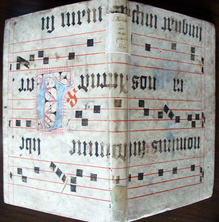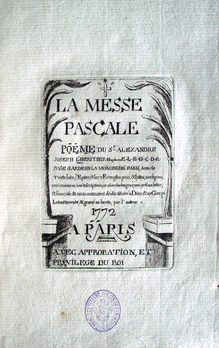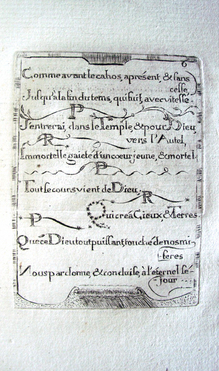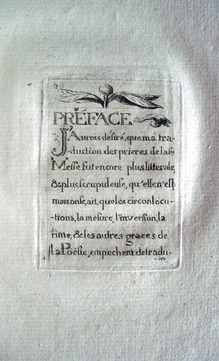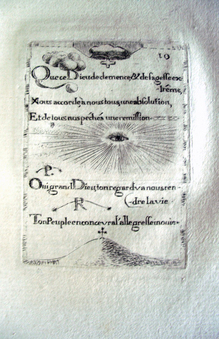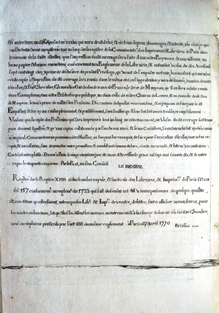L’Héritier used the Latin liturgical text (Ordinary of the Mass with Easter proper) as basis for his imagery, paraphrasing the text in French on opposite pages. Parts of the liturgical text (introit Christus surrexit, et al.) are at variance with the Roman missal. Approbation by ecclesiastical censor (p. 124) is included dated 3 Apr. 1770.
The botanist, magistrate, and bibliophile Charles Louis L’Héritier de Brutelle (1746-1800) came from a large aristocratic French family and it is possible that Alexandre was a relation. Charles had a large library and published several beautifully illustrated books, working closely with the prolific engraver Pierre Joseph Redouté (1759-1840). Is it possible that Alexandre collected the discarded plate fragments and used them to publish a book of his own? Pure speculation.
See also Charles Louis L’Héritier de Brutelle (1746-1800), Cornus. Specimen botanicum sistens descriptiones et icones specierum corni minus cogitarum (Paris: Didot, 1788). Rare Books Oversize QK495.C785 L53e
